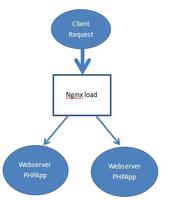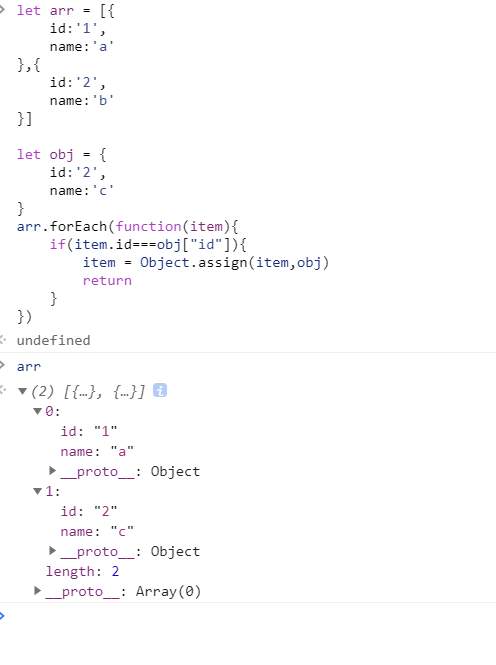如果未能及时完成,NodeJS将超时
一定时间后如何使承诺超时?我知道Q有一个Promise超时,但是我使用的是本机NodeJS Promise,它们没有.timeout函数。
我是否想念一个或包裹不同的包裹?
或者,下面的实现在不占用内存的情况下是否很好,实际上按预期方式工作?
还可以以某种方式将其包装到全局中,以便将其用于我创建的每个promise,而不必重复setTimeout和clearTimeout代码吗?
function run() { logger.info('DoNothingController working on process id {0}...'.format(process.pid));
myPromise(4000)
.then(function() {
logger.info('Successful!');
})
.catch(function(error) {
logger.error('Failed! ' + error);
});
}
function myPromise(ms) {
return new Promise(function(resolve, reject) {
var hasValueReturned;
var promiseTimeout = setTimeout(function() {
if (!hasValueReturned) {
reject('Promise timed out after ' + ms + ' ms');
}
}, ms);
// Do something, for example for testing purposes
setTimeout(function() {
resolve();
clearTimeout(promiseTimeout);
}, ms - 2000);
});
}
谢谢!
回答:
本机JavaScript承诺没有任何超时机制。
有关您的实现的问题可能更适合http://codereview.stackexchange.com,但有几点注意事项:
您没有提供在诺言中实际做任何事情的方法,并且
由于计划了一次计时器,因此不需要
clearTimeout在setTimeout回调中进行setTimeout。由于承诺一旦被解决/被拒绝,就无法被解决/被拒绝,因此您不需要进行检查。
所以也许遵循以下思路:
function myPromise(ms, callback) { return new Promise(function(resolve, reject) {
// Set up the real work
callback(resolve, reject);
// Set up the timeout
setTimeout(function() {
reject('Promise timed out after ' + ms + ' ms');
}, ms);
});
}
像这样使用:
myPromise(2000, function(resolve, reject) { // Real work is here
});
(或者您 希望它稍微复杂一些,请参见下面的更新。)
我会稍微担心以下事实,即语义会稍有不同(no new,而您确实使用new了Promise构造函数),因此可以进行调整。
当然,另一个问题是,在大多数情况下,您不想构建新的Promise,因此无法使用以上内容。大多数时候,您已经有一个承诺(上一次then通话的结果,等等)。但是,对于真正要构建新承诺的情况,可以使用上述类似方法。
您可以new通过子类化处理Promise:
class MyPromise extends Promise { constructor(ms, callback) {
// We need to support being called with no milliseconds
// value, because the various Promise methods (`then` and
// such) correctly call the subclass constructor when
// building the new promises they return.
// This code to do it is ugly, could use some love, but it
// gives you the idea.
let haveTimeout = typeof ms === "number" && typeof callback === "function";
let init = haveTimeout ? callback : ms;
super((resolve, reject) => {
init(resolve, reject);
if (haveTimeout) {
setTimeout(() => {
reject("Timed out");
}, ms);
}
});
}
}
用法:
let p = new MyPromise(300, function(resolve, reject) { // ...
});
p.then(result => {
})
.catch(error => {
});
// Uses var instead of let and non-arrow functions to try to be// compatible with browsers that aren't quite fully ES6 yet, but
// do have promises...
(function() {
"use strict";
class MyPromise extends Promise {
constructor(ms, callback) {
var haveTimeout = typeof ms === "number" && typeof callback === "function";
var init = haveTimeout ? callback : ms;
super(function(resolve, reject) {
init(resolve, reject);
if (haveTimeout) {
setTimeout(function() {
reject("Timed out");
}, ms);
}
});
}
}
var p = new MyPromise(100, function(resolve, reject) {
// We never resolve/reject, so we test the timeout
});
p.then(function(result) {
snippet.log("Resolved: " + result);
}).catch(function(reject) {
snippet.log("Rejected: " + reject);
});
})();
<!-- Script provides the `snippet` object, see http://meta.stackexchange.com/a/242144/134069 -->
<script src="http://tjcrowder.github.io/simple-snippets-console/snippet.js"></script>
reject计时器到期时,即使回调调用resolve或reject第一次调用,这两者都将调用。这很好,承诺的结算状态不能一旦它的设置改变,该规范定义来电resolve或reject上一个已经解决的不产生错误的DO-
空话的承诺。
但是,如果麻烦您了,您可以把resolve和包装起来reject。这里的myPromise这样做的方式:
function myPromise(ms, callback) { return new Promise(function(resolve, reject) {
// Set up the timeout
let timer = setTimeout(function() {
reject('Promise timed out after ' + ms + ' ms');
}, ms);
let cancelTimer = _ => {
if (timer) {
clearTimeout(timer);
timer = 0;
}
};
// Set up the real work
callback(
value => {
cancelTimer();
resolve(value);
},
error => {
cancelTimer();
reject(error);
}
);
});
}
您可以旋转约18种不同的方式,但是基本概念是,resolve并且reject我们通过收到的promise执行程序是清除计时器的包装器。
,这会创建不需要的函数和额外的函数调用。规范明确了已解决诺言时的解决功能。他们很早就退出了。
以上是 如果未能及时完成,NodeJS将超时 的全部内容, 来源链接: utcz.com/qa/405123.html









